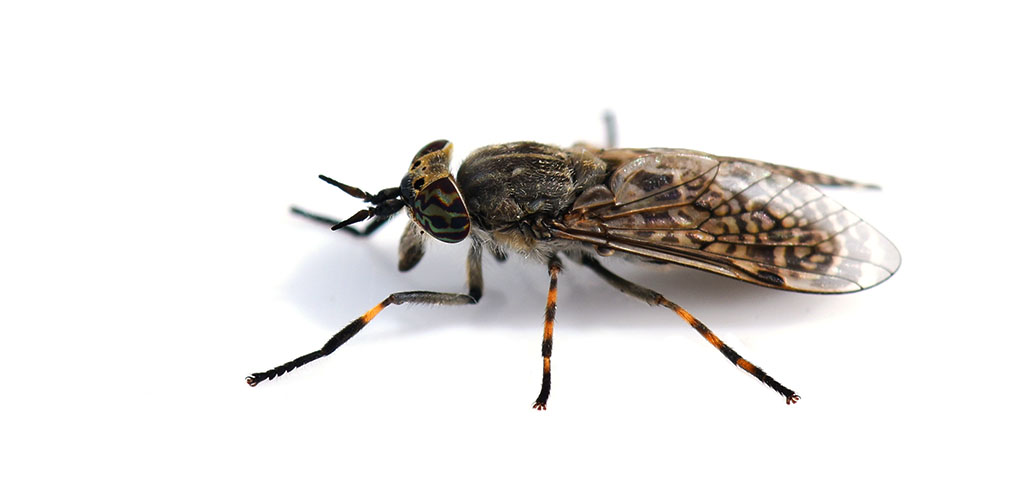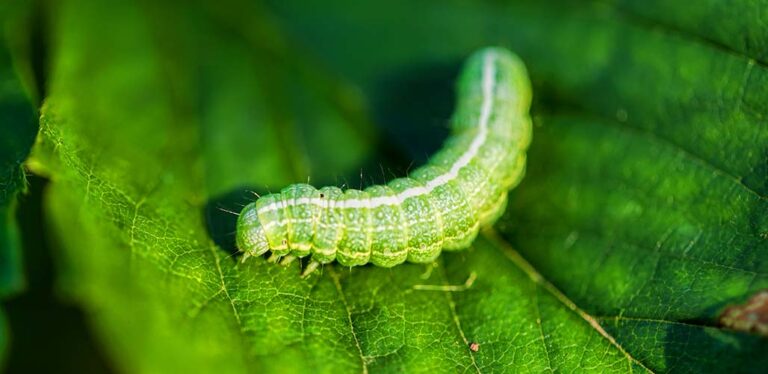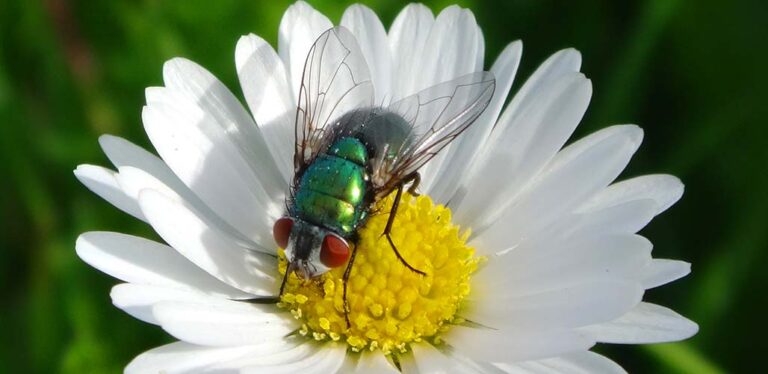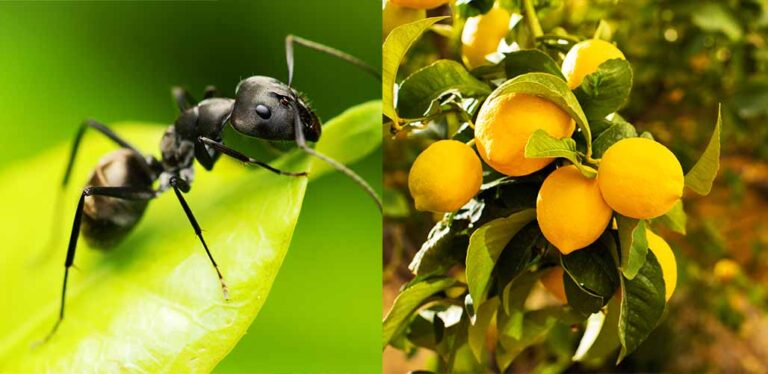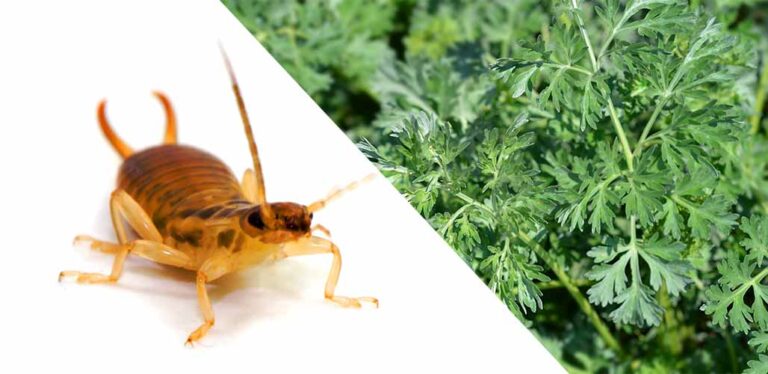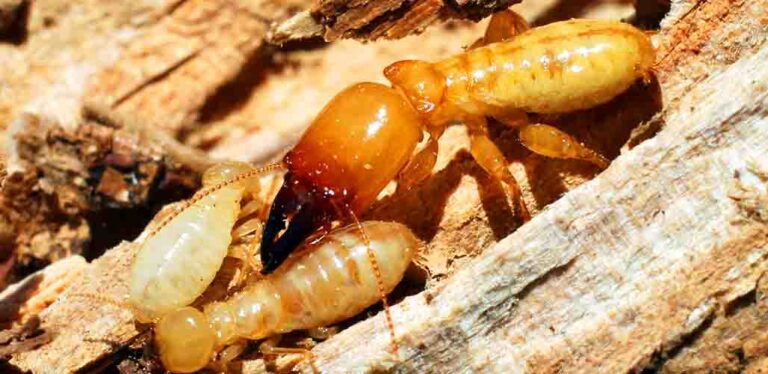Where Do Horse Flies Live?
Horse flies live anywhere that they can get a meal, which is usually around livestock like horses and cattle. These nasty flies are known for their painful and persistent attacks. Unlike mosquitoes that puncture the skin to suck the blood out, horseflies tear skin with their sharp, razor-like mouthparts to cut through the skin and get at the blood. Their jaw also has tiny hooks to help them latch on to feed, which is why their bites hurt so much. Today I’ll share where horseflies like to hang out, and how to avoid their unwanted attention.
Contents
- Where do horse flies live?
- Horseflies vs deerflies
- What are horse flies attracted to?
- How to keep horse flies away
- Avoiding and treating horsefly bites
Where Do Horse Flies Live?
As the name suggests, horseflies are attracted to mammal hosts like horses and other livestock. But these ferocious flies can live just about anywhere and are found in both rural and suburban settings.
There are approximately 4400 species of horseflies, and these global insects are found almost anywhere in the world, except polar regions and several islands like Iceland, Greenland, and Hawaii.
Horseflies are commonly found in wet, warm environments conducive to breeding and will often lay their eggs close to water or on plants, like in long marshy grasses and near soil alongside bodies of water.
What Do Horse Flies Look Like?
Horseflies are about twice the size of the common housefly with six legs, stout bodies, huge, brightly-colored eyes, and prominent, blade-like mouthparts.
Their wings can be solid or clear. They’re strong, fast fliers able to travel long distances and will have no trouble chasing you.
Are Deerflies the Same as Horseflies?
Although these two insects share many similarities, they are two different fly species. The biggest difference is size. Horseflies are considerably larger, measuring anywhere from ½ inch to 1 ¼ inch long, while deerflies are usually between ½ inch and 1/3 inch long.
The horsefly’s antennae are shorter than its head, while the deerfly’s antennae are longer than its head.
What Attracts Horseflies?
Horseflies are attracted to movement, warmth, shiny objects, and exhaled carbon dioxide. Smells like blood, sweat, and manure also interest these unwanted pests.
What Color Attracts Horseflies?
Horseflies are enticed by dark colors, particularly dark blue. Conversely, they seem to be repelled by anything yellow. Dress accordingly.
When are Horseflies Most Active?
Horseflies like sunlight and heat and are most active from late spring to early autumn. They only come out during the day and tend to stay away from shady areas.
How Long Do Horseflies Live?
Female horseflies lay eggs in the fall, which turn into larvae in the winter. When spring arrives, they develop into the pupae stage, which lasts about one or two weeks. It takes up to ten weeks for horseflies to become adults and they live from 30 to 60 days.
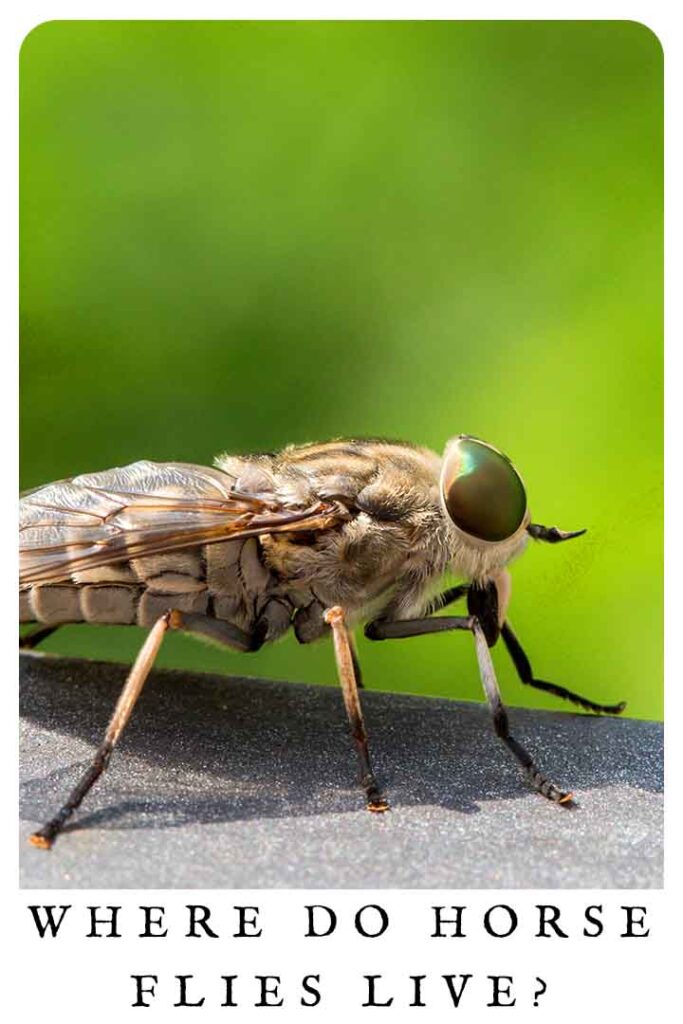
How Do You Keep Horseflies Away?
Horseflies are repelled by certain smells, which is why the smoke and scent of burning citronella candles can keep them at bay. But a lemony aroma isn’t the only scent that will deter them. Natural oils such as lavender, clove, rosemary, eucalyptus, tea tree, and peppermint may also work to keep horseflies from invading your outdoor get-togethers.
If you’re venturing where there could be horseflies, wearing long sleeves and pants is often the most effective way to prevent being bitten. Using a repellent that contains DEET can also work, but it should be noted that some people experience rashes or skin irritations from this ingredient.
Are Horseflies Aggressive?
Male horseflies feed only on pollen and plant nectar and are not aggressive. They also don’t possess the scissor-like mouthparts to bite. Although females also feed on nectar most of the time, when it’s time to mate, they must aggressively drink blood to reproduce.
Horseflies mate during the summer and will relentlessly and continuously bite their intended target until they get their fill of blood or die trying.
What Happens When a Horsefly Bites You?
If you’ve ever had a horsefly bite, you know it hurts. Pain, redness, burning, and slight swelling are the most common results of a horsefly bite, and these signs should disappear within a few days at most.
However, in rare cases, people may have more severe reactions such as difficulty breathing or swallowing, dizziness, swelling of the throat or face, and vomiting. If you experience any of these symptoms after a horsefly bite, seek immediate medical attention.
Are Horsefly Bites Dangerous?
Allergic reactions and infection from horsefly bites can be harmful to people but are relatively uncommon. However, horseflies do pose a real danger to horses. This is because they carry equine infectious anemia, also known as swamp fever, an easily transmitted disease that is life-threatening to equine animals.
How Do You Treat a Horsefly Bite?
Cleaning the bitten site with plain soap and warm water is the best treatment. You can reduce pain and swelling by placing an ice pack on the affected area for 10 minutes. Avoid scratching the spot or trying other remedies.
How Do You Get Rid of Horseflies?
Combining a cup of warm water with 2 cups of white vinegar and 4 tablespoons of dish or other liquid soap in a spray bottle is a natural solution to kill horseflies and most other insects without harming humans, pets, or plants.
How Can I Avoid Horsefly Bites?
To avoid being bitten by horseflies in the first place, you can stay away from water and wooded areas and avoid walking in long grass on hot, humid days.
Wearing white or light-colored clothing, including pants and shirts with long sleeves and using insect repellant on any exposed skin could also offer some protection.
Can Horseflies Transmit Disease to Humans?
While many viruses and bacteria, including Lyme disease, have been detected in female horseflies, there is no evidence that they transmit any diseases to humans.
Where Do Horse Flies Live?
Horseflies can live in many different environments. They’re most attracted to warm, wet areas such as freshwater and saltwater swamps, marshes, streams, creeks, ponds, and beach dunes. They can also be found in moist forest soils and along the edges of wooded areas.
These insects, with their sharp, scissor-like mouthparts that cut through the skin to get to the blood, are most active during daylight hours from May through September.

